The 7.6-metre-high Martian sculpture in Crown Passage was inspired by HG Wells’ famous science-fiction work The War of the Worlds, written while Wells was living in Woking. During his three-year stay here (from 1885), he also wrote The Invisible Man and several short stories.
An illustration and text about HG Wells.
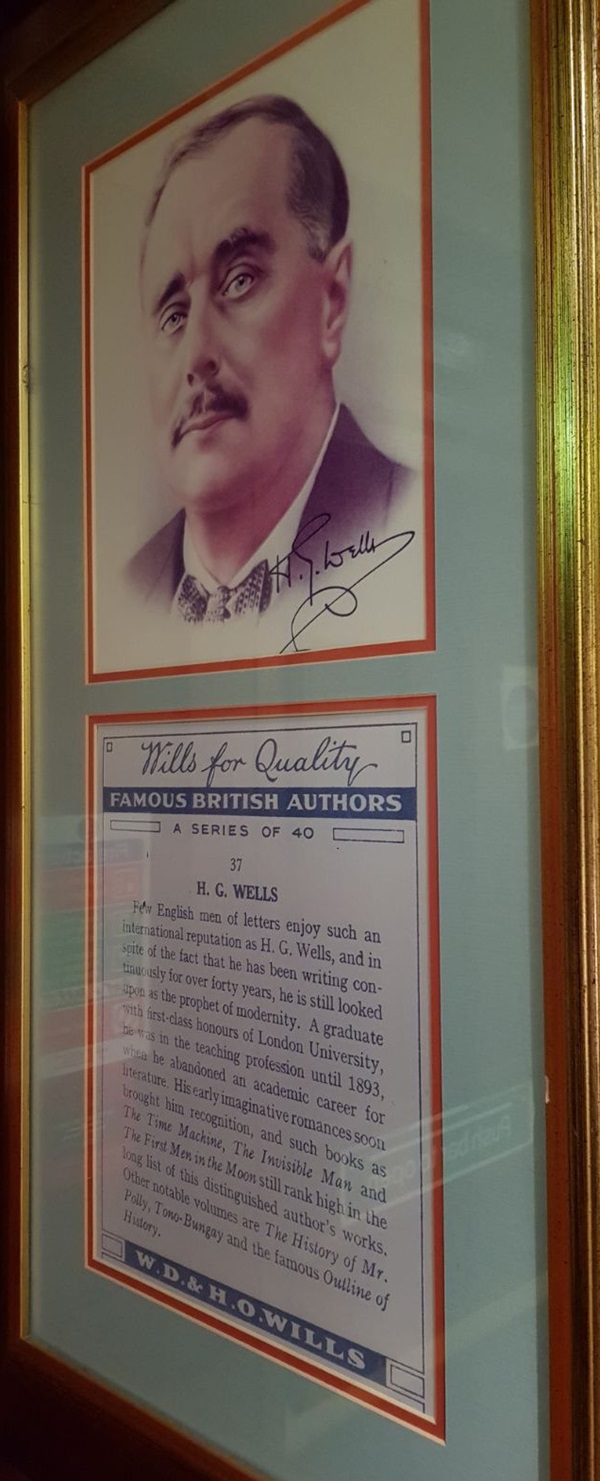
The text reads: Few English men of letters enjoy such an international reputation as HG Wells, and in spite of the fact that he has been writing continuously for over forty years, he is still looked upon as the prophet of modernity. A graduate with first class honours of London University, he was in the teaching profession until 1893, when he abandoned an academic career for literature. His early imaginative romances soon brought him recognition, and such books as The Time Machine, The Invisible Man and The First Men in the Moon still rank high in the long list of this distinguished author’s works. Other notable volumes are The History of Mr Polly, Tono-Bungay and the famous Outline of History.
An illustration depicting HG Wells’ War of the Worlds.
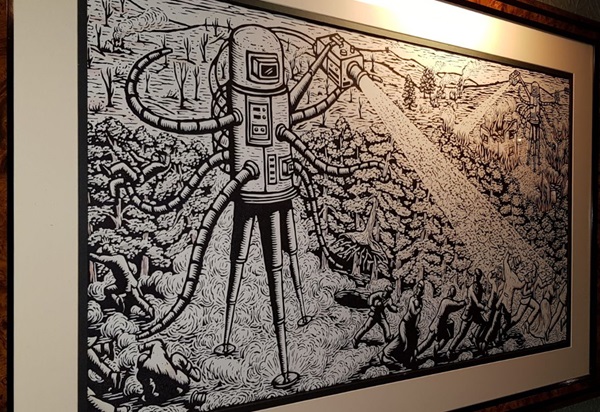
An illustration of John Donne and HG Wells.
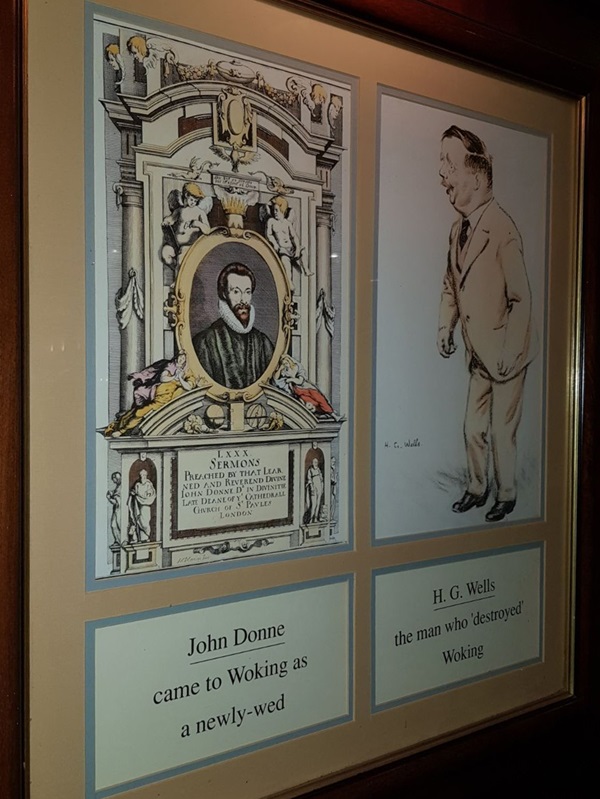
A print, photograph and text about George Bernard Shaw and Dame Ethel Smyth.
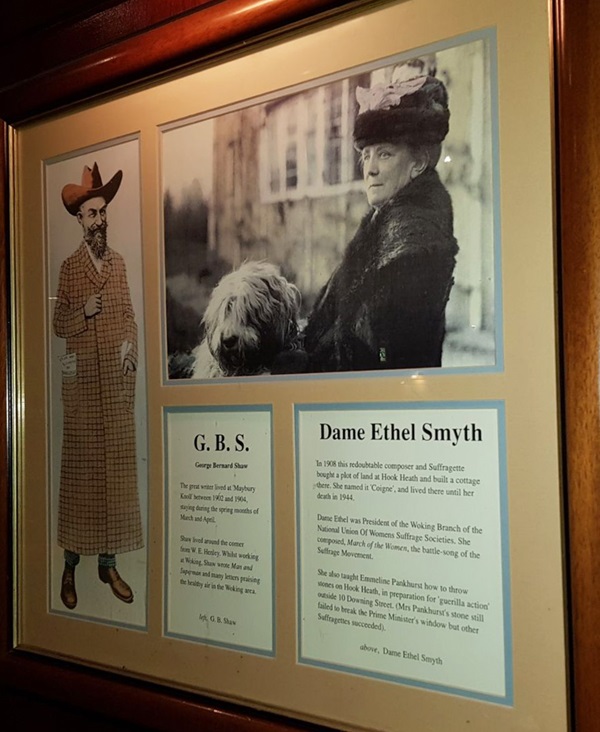
The text reads: George Bernard Shaw
The great writer lived at Maybury Knoll between 1902 and 1904, staying during the summer months on March and April.
Shaw lived around the corner from WE Henley. Whilst working and Woking, Shaw wrote Man and Superman and may letters praising the healthy air in the Woking area.
Left: GB Shaw.
Dame Ethel Smyth
In 1908 this redoubtable composer and Suffragette bought a plot of land at Hook Heath and built a cottage there. She named it Coigne, and lived there until her death in 1944.
Dame Ethel was president of the Woking branch of the National Union of Womens Suffrage Societies. She composed, March of the Women, the battle song of the Suffrage Movement.
She also taught Emmeline Pankhurst how to throw stones of Hook Heath, in preparation for ‘guerrilla action’ outside 10 Downing Street. (Mrs Pankhurst’ stone still failed to break the prime ministers window but other Suffragettes succeeded).
Above: Dame Ethel Smyth.
Photographs of Woolworths being rebuilt, c1958.
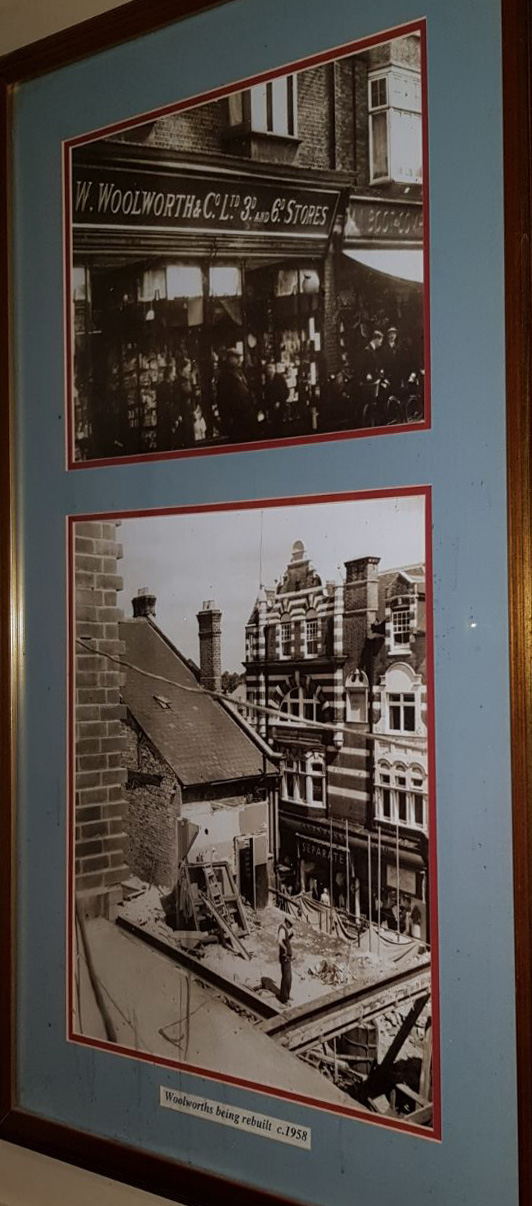
Photographs and text about the Tipperary Rooms.
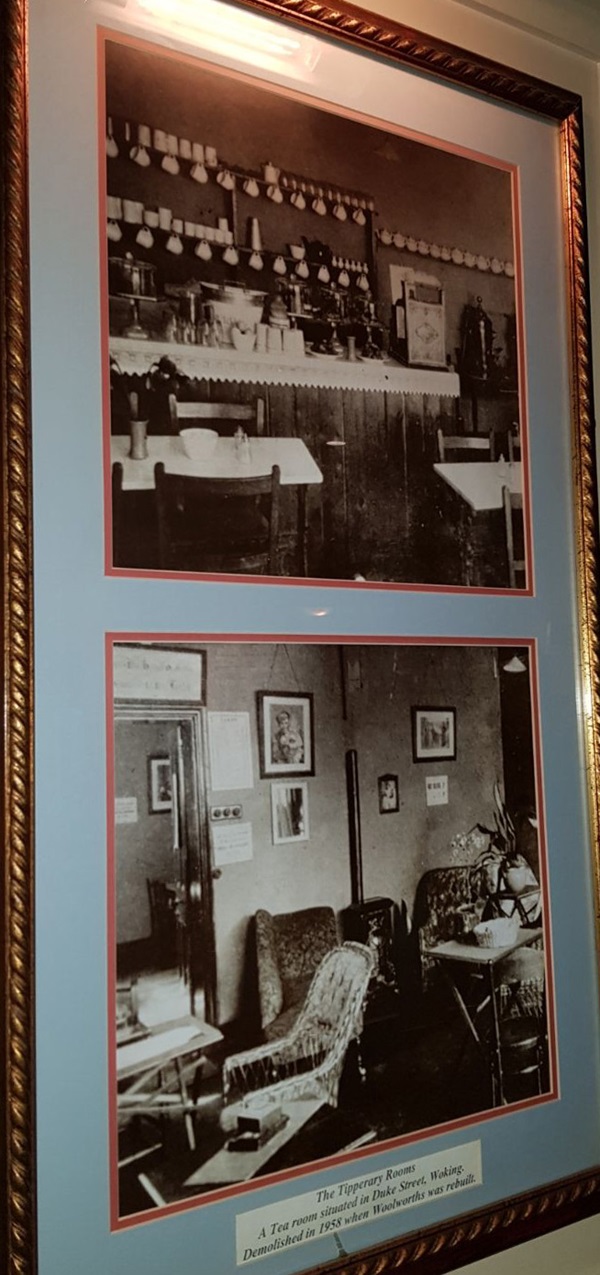
A tea room situated in Duke Street, Woking. Demolished in 1958 when Woolworths was rebuilt.
Photographs of Chertsey Road, c1910.
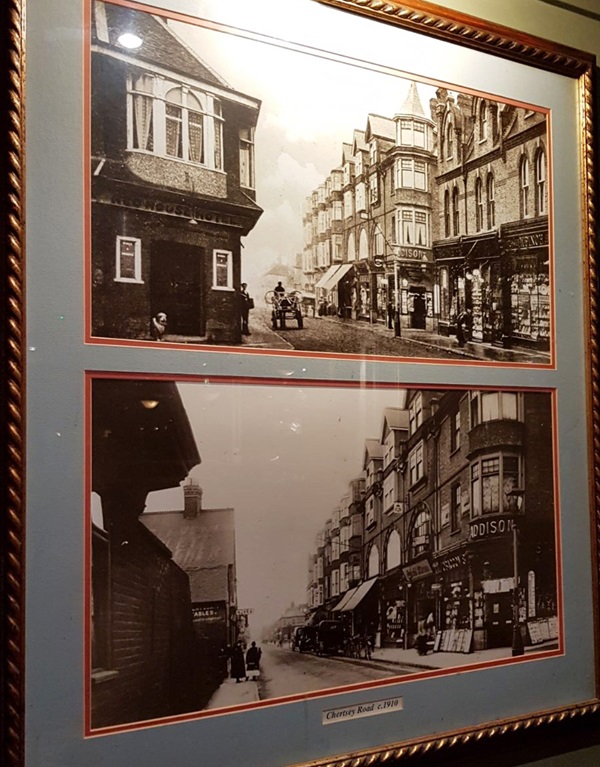
A sculpture of Herbert Wells.
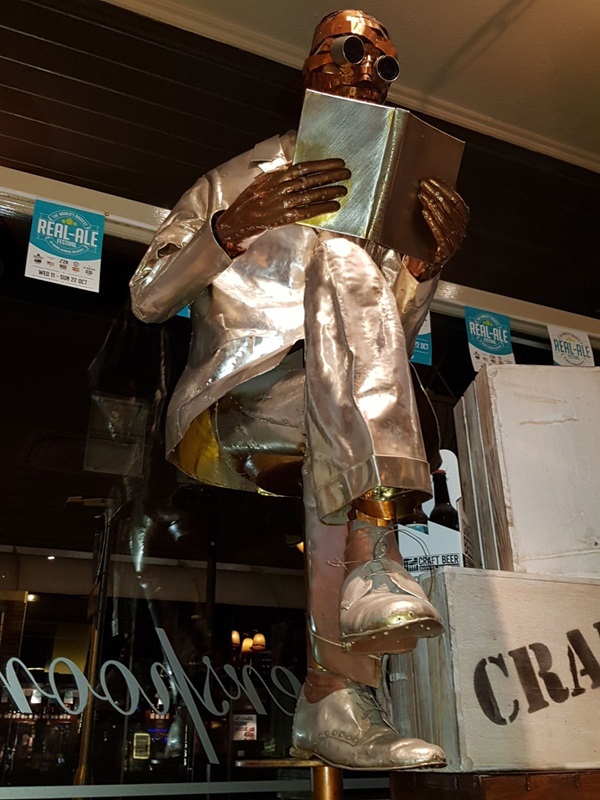
External photograph of the building – main entrance.
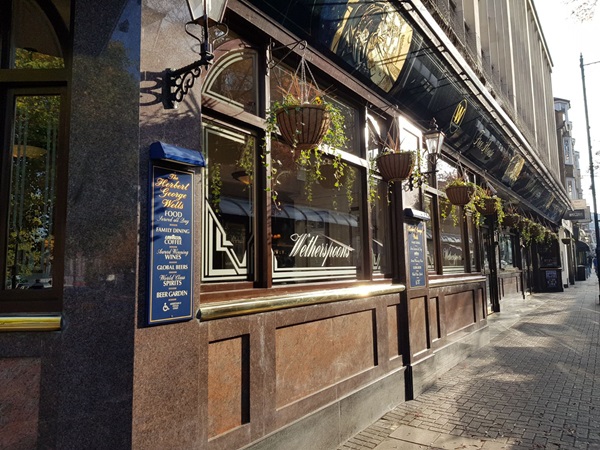
If you have information on the history of this pub, then we’d like you to share it with us. Please e-mail all information to: pubhistories@jdwetherspoon.co.uk